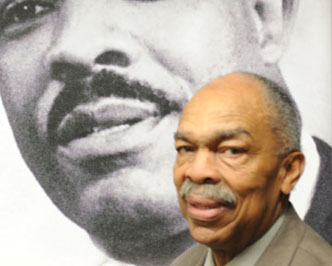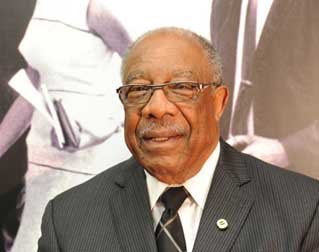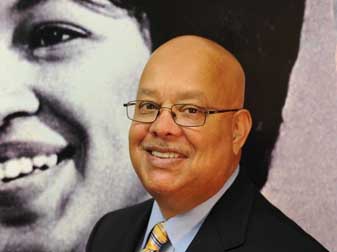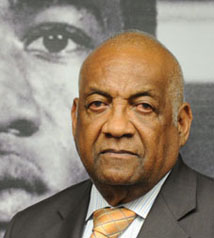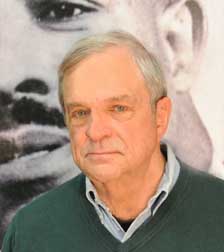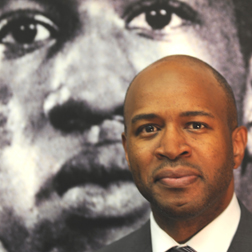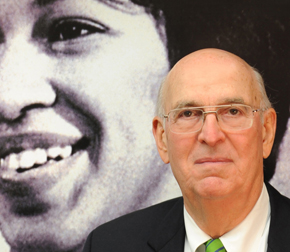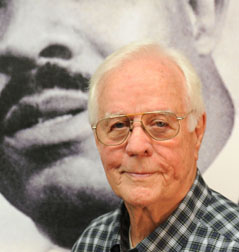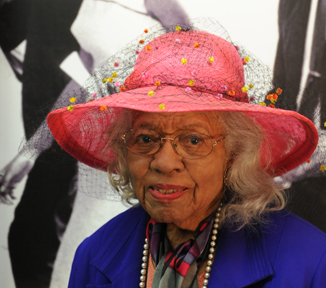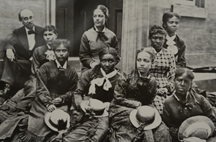

1963-2013: Desegregation—Integration Reflections |
||||||||||||||||||
“After the 1954 Brown Decision, initiated by the Briggs v Elliot case of South Carolina,‘official’ [white] South Carolina was upset. The climate wasn’t hostile but it was edgy—you could feel it in the air. Governor Jimmy Byrnes fought tooth and nail to preserve segregation. But Harvey Gantt’s admission to Clemson calmed things down. South Carolina blacks escaped the bloodshed of Alabama and Mississippi due to the NAACP’s use of the court system. Because blacks were not protesting in the streets, it seemed as if official South Carolina accepted desegregation as it would be defined through the court system.” |
||||||||||||||||||
“The situation was more tense in South Carolina in 1963 than in times past. There were a number of activities in Sumter with students at Morris College, in Rock Hill with students at Friendship Junior College, in Columbia with students from Allen and Benedict, in Denmark with students from Voorhees, in Orangeburg with students from S.C. State, and with civil rights activities in Charleston as well. There was a feeling as if this whole thing was coming to a head, and things were going to be resolved in one way or another.” James L. Solomon, Jr. |
||||||||||||||||||
“Race relations were in a transitory period—not necessarily segregated but definitely not integrated. There were subtle efforts to improve the racial climate in Columbia since South Carolinians had witnessed the unrest and violence and abhorrent conduct of many whites and their resistance to desegregation. There were leaders in South Carolina and in Columbia who were trying to avoid the combative conduct witnessed in Alabama, Mississippi, and other states. To a large measure, our community avoided such violence due to the outstanding leadership in the African American community, individuals who displayed unparalleled commitment for improving the quality of life for all South Carolinians.” I. S. Leevy Johnson |
||||||||||||||||||
“For Negroes, 1963 was a very volatile year. This was a time when efforts were underway to desegregate the schools and public accommodations. I am uncertain as to whether the Columbia constabulary was really ready for desegregation. But community leaders saw the handwriting on the wall, and the one thing that they wanted was a smooth transition without any violence. Columbia leaders were prepared to make that transition and to make some sacrifice since they were aware that the white community felt the time was not right—that Negroes were asking for too much and pushing too fast. There were many people in the City of Columbia who were interested in the business atmosphere and did not want violence in the black or white communities.” Hemphill P. Pride II |
||||||||||||||||||
“Starting in the fall of 1963 there was much in the newspapers about the possibility of the university desegregating. Some groups in Columbia were looking for 'accommodation' as a way for the university not to desegregate. And there were some people taking the position this was a test of southern manhood and that the university shouldn’t desegregate. No one wanted violence or events similar to what happened at the University of Mississippi. But among many, there was great resentment. There were also groups of blacks and whites in Columbia who were working together to try to help the community itself desegregate.” |
||||||||||||||||||
“Columbia at that time was the seat of state government and it stood at the center of commercial, educational, and political development for South Carolina. Against the back drop of Jim Crow and amid the prevailing winds of the Civil Rights Movement, the city found itself at a crossroads. Should it defend tradition or should it embrace progress? During the early 1960s, there were many voices in dialogue and in conflict with each other. Here you found some who dared to advance a moderate or a slightly progressive vision for the city. But there were many in power who strongly defended the status quo and worked to maintain the system of segregation and inequality. At the same time, you had organizations and a growing movement of young people who struggled and fought for change.” Bobby Donaldson |
||||||||||||||||||
“1963 was a critical year of transition as the legal, institutional, and cultural grip of segregation slowly began to weaken. The year began with outgoing Gov. Ernest Hollings declaring that further legal resistance to desegregation was futile. He appealed for South Carolina to ‘move on . . . with dignity.’ By the end of the year, both Clemson University and the University of South Carolina began token desegregation. |
||||||||||||||||||
“For white South Carolinians, racial understanding did not come about as a sudden change. A belief in desegregation was not having an epiphany. There had to be some type of experience to take us beyond our traditional and narrow white southern perspective. With the 1960s, we saw President Kennedy, Martin Luther King, the Freedom Riders, and the tragedies in Birmingham. This period caused some whites to open their eyes and realize that there was a bigger world out there than prior experiences had afforded them.” |
||||||||||||||||||
“We were quite aware of the tensions that were leading up to my niece’s enrollment at USC. I was not fearful but certainly was not expecting a bomb to be thrown in our yard. While that is often mentioned in accounts of those times, there were many other acts that we endured—coming home from work and receiving telephone calls and messages from agitators who would use the N-word and make other statements. They knew when I would be arriving home. We weren’t frightened but were very cautious.” Martha C. Monteith |
||||||||||||||||||
|
||||||||||||||||||
![]()

an institutional member of the International Coalition of Sites of Conscience
Museumofed@gmail.com

